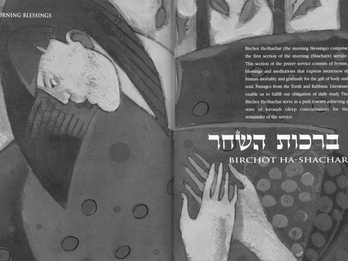The Definitive Orange on the Seder Plate Story
A Woman’s Idea
In the early 1980s, the Hillel Foundation invited me to speak on a panel at Oberlin College. While on campus, I came across a haggadah that had been written by some Oberlin students to express feminist concerns. One ritual they devised was placing a crust of bread on the seder plate as a sign of solidarity with Jewish lesbians, a statement of defiance against a rebbetzin’s pronouncement that, “There’s as much room for a lesbian in Judaism as there is for a crust of bread on the seder plate.”
At the next Passover, I placed an orange on our family’s seder plate. During the first part of the seder I asked everyone to take a segment of the orange, make the blessing over fruit, and eat it as a gesture of solidarity with Jewish lesbians, gay men, and others who are marginalized within the Jewish community (I mentioned widows in particular).
Bread on the seder plate brings an end to Pesach—it renders everything chametz, and its symbolism suggests that being lesbian is transgressive, violating Judaism. I felt that an orange was suggestive of something else: the fruitfulness for all Jews when lesbians and gay men are contributing and active members of Jewish life. In addition, each orange segment had a few seeds that had to be spit out—a gesture of spitting out, repudiating the homophobia that poisons too many Jews.
When lecturing, I often mentioned my custom as one of many new feminist rituals that had been developed in the past thirty years. Somehow, though, the typical patriarchal maneuver occurred: my idea of an orange and my intention of affirming lesbians and gay men were transformed. Now the story circulates that a man stood up after a lecture I delivered and said to me, in anger, that a woman belongs on the bimah as much as an orange on the seder plate. My ideas—a woman’s words—are attributed to a man, and the affirmation of lesbians and gay men is simply erased.
Isn’t this precisely what’s happened over the centuries to women’s ideas: a transfer to men’s voices? And isn’t this precisely the erasure of their existence that gay and lesbian Jews continue to endure, to this day?
Credits
Susannah Heschel, “The Definitive Orange on the Seder Plate Story,” from The Journey Continues: The Ma’ayan Passover Haggadah, 2nd edition, ed. Tamara Cohen (New York: Ma’ayan: The Jewish Women’s Project, 2002), p. 14. Used with permission of the publisher.
Published in: The Posen Library of Jewish Culture and Civilization, vol. 10.





